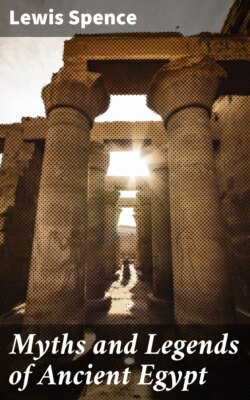Читать книгу Myths and Legends of Ancient Egypt - Lewis Spence - Страница 41
На сайте Литреса книга снята с продажи.
The Greek Mysteries
ОглавлениеLet us briefly examine the mysteries of ancient Greece. We find that these are for the most part pre-Hellenic, and that the conquered populations of the country adopted the mystic attitude in order to shroud their religious ceremonies from the eyes of the invaders. Now those early populations inherited a strong cultural influence from Egypt. The most important of the mysteries was perhaps the Eleusinian, and we may take it as typical of the Greek religious mysteries as a whole. The chief figures in this mysterious cult were Demeter and Kore (or Persephone) and Pluto. Now these are all deities of the underworld and, like many other gods of Hades all the world over, they are also deities possessing an agricultural significance. Much remains uncertain regarding the actual ritual in the hall of the Mystæ, but one thing is certain, and that is that the ceremony was in the nature of a religious drama or Passion-play, in which were enacted the adventures of Demeter and Kore, symbolic of the growth of the corn. Hippolytus also stated that a cornstalk was shown to the worshippers at the Eleusinian mysteries. The whole mystery then resolved itself into symbolism of the growth of the crops. Exactly how the ceremonies in connexion with this came to have the appearance of those usually associated with a savage secret society is not quite clear. The blackfellows of Australia and certain North American Indian tribes possess societies and celebrations almost identical with that of Eleusis, but why they should be wrapped in such mystery it is difficult to understand. It has been stated that the mystic setting of these cults arose in many cases from the dread of the under-world and the miasma which emanated therefrom, and which necessitated a ritual purification; but this does not seem at all explanatory. In the Popul Vuh of Central America we find what appear to be the doings of a secret society among the deities of the underworld, some of whom are gods of growth.
We seem to see some such society outlined in the Book of the Dead, which perhaps dates from prehistoric times, and is most probably the remains of a Neolithic cult connected with the phenomena of growth. In its pages we find password and countersign and all the magical material necessary to the existence of such a secret cult as we have been speaking of. We may take it, then, that the Egyptian mysteries strongly resembled those of Greece, that their ritual was of a character similar to that of the Book of the Dead, and that it perhaps possessed an origin in common with that work. These mystical associations would appear to be all of Neolithic origin, and to possess an agricultural basis for the most part. When, therefore, we see in Herodotus and elsewhere a strong disposition to preserve these mysteries intact we find ourselves once more face to face with the original question—Why are they mysteries?
In the first place, all growth is mysterious, and primitive man probably regarded it as in some manner magical. Secondly, it is noticeable that nearly all these mysteries, in the old world at least, took place underground, in darkness, and that there was enacted the symbolism of the growth of corn, probably for the purpose of inciting the powers of growth to greater activity by dint of sympathetic magic.
